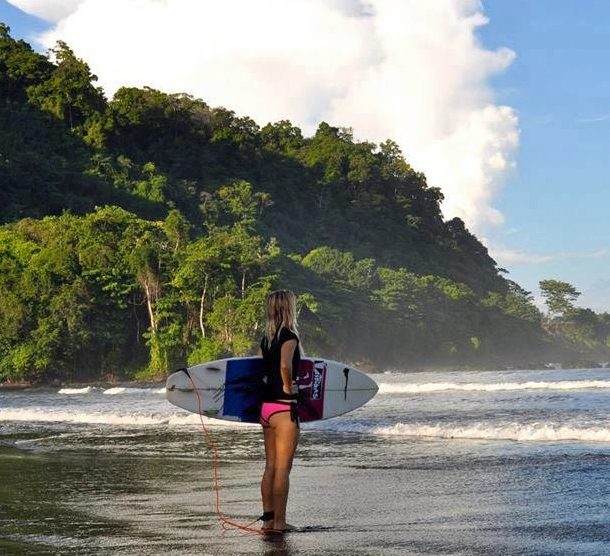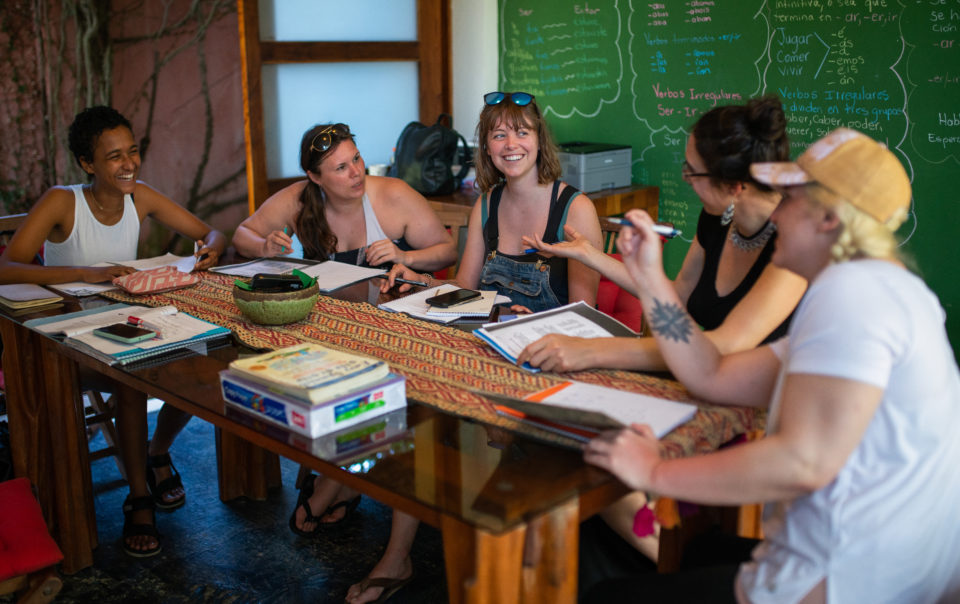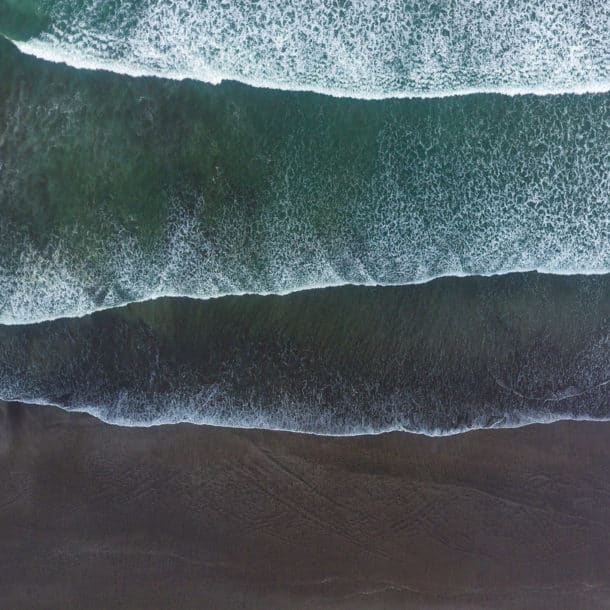
Today’s post is about five of the most common mistakes that we see beginners make while learning to surf in Costa Rica.
Let’s face it- learning to surf isn’t easy. If it were easy though, everyone would do it, and those that stick with it love it for life. At our Costa Rica surf camp we have taught thousands of people to surf over the years and have made the learning process a heck of a lot smoother and faster. One of the tools we use to do this is video review. We video our surfers in action and then review the video back in the comfort of our surf lounge using the convenience of pause and rewind to point out the mistakes, corrections, and improvements of each surfer. We all have good waves and bad waves, and even the best surfers learn this way. Here are some very common mistakes we see beginners make:
1. Going to the Knees First Before Standing Up

2. Bending Too Much at the Waist

3. Incorrect Foot Position

4. Jumping Up Too Early

1) Make sure you haven’t drifted too far in or out. Look left and right to make sure you are still in the “line up” of surfers parallel to the beach.
2) Watch for wave sets, try to gauge where the wave will have enough power to pick you up but not have broken yet.
3) Get balanced on your board with the board as level as possible on the water, with the nose slightly out of the water.
4) Start paddling in the direction of the shore before the wave gets to you to get some momentum and speed which will help the wave pick you up.
5) Paddle hard, and don’t stop until you feel the wave actually pushing the board or you are dropping down the face of the wave (this usually requires an extra couple of paddles more than what beginners think, so just give it a couple of extra strong paddles before you jump up!)
There are a lot of little factors going on at this moment that can cause you to catch the wave or not, like where you are shifting your weight or placing your feet for example, but the most important thing to remember here is that most beginners get excited and try to jump up too soon. Usually just a couple of more strong paddles would have done the trick.
5. Eyes Not Looking Where You Want To Go

Zach McDuffie
Founder, Creative Director at School of the WorldCheck out all the fun we’re having, right now, at the School of the World!
to reach our office directly +506.2643.2462
to reach a guest +506.2643.1064
U.S. number that connects to our office
+1-305-517-7689
schooloftheworld (skype)
Check out all the fun we’re having, right now, at the School of the World!
to reach our office directly
+506.2643.2462
to reach a guest +506.2643.1064
U.S. number that connects to our office +1-305-517-7689
schooloftheworld (skype)





